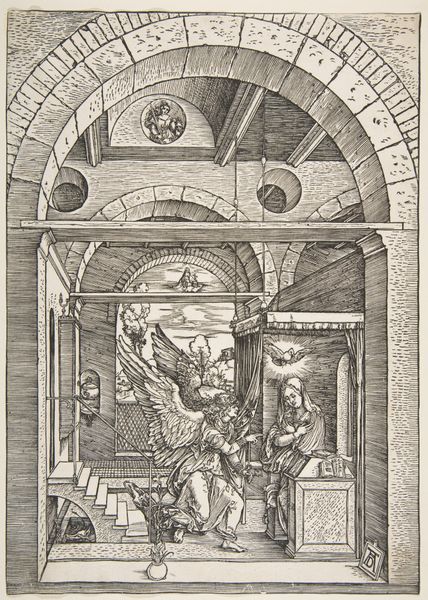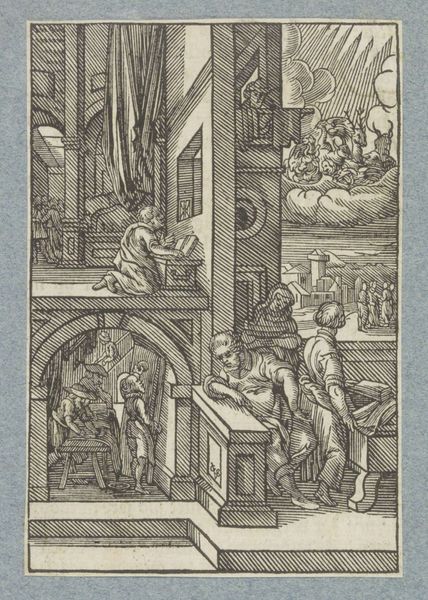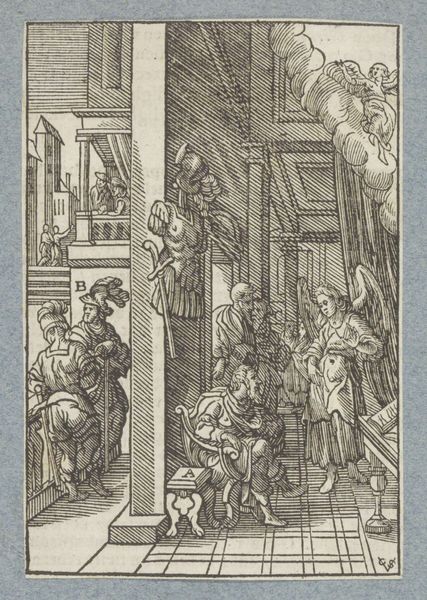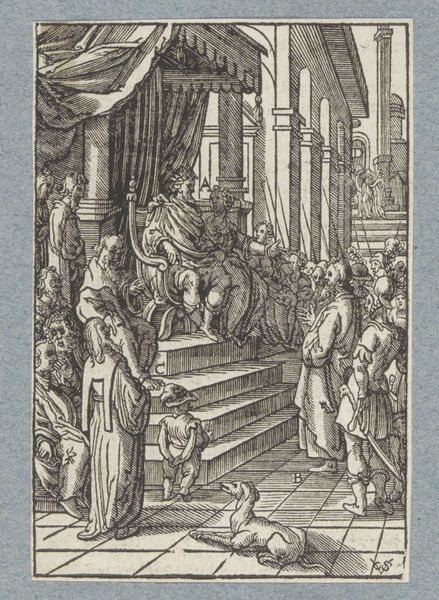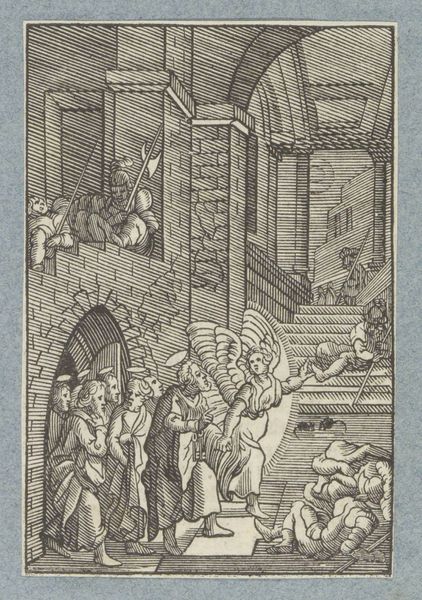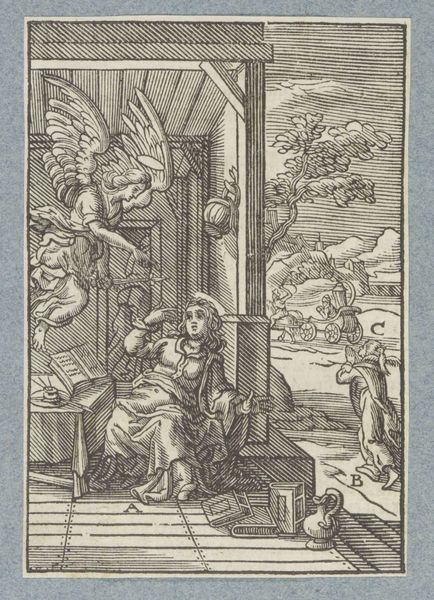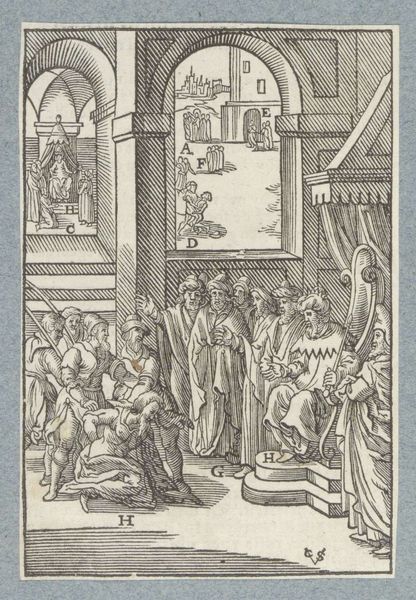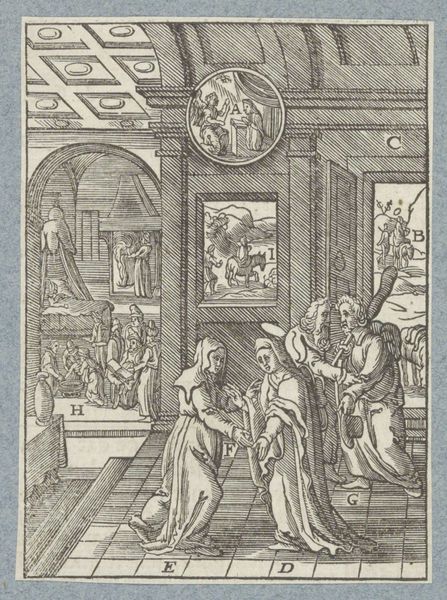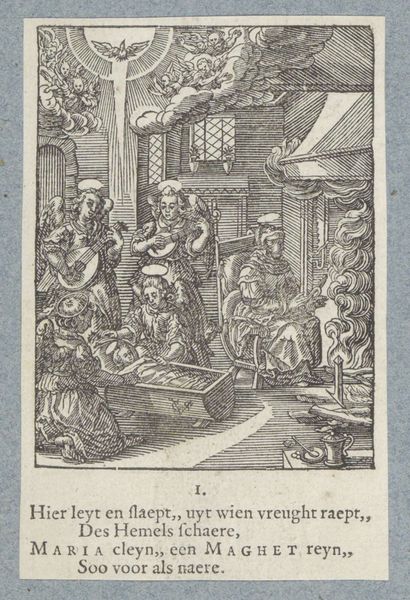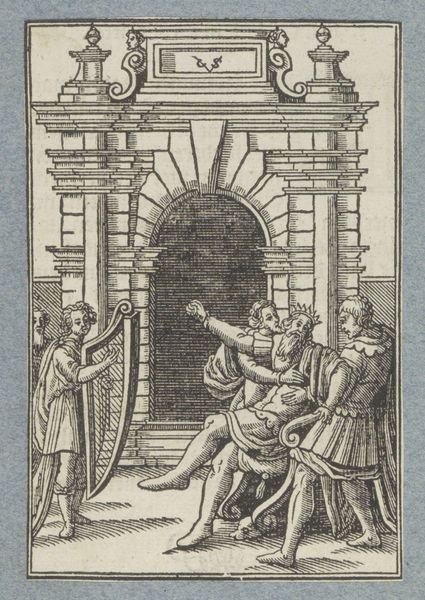
Hoofd van Saul wordt tempel van Filistijnen binnengebracht 1645 - 1646
0:00
0:00
drawing, intaglio, ink, engraving
#
drawing
#
narrative-art
#
baroque
#
intaglio
#
figuration
#
ink
#
history-painting
#
engraving
Dimensions: height 109 mm, width 80 mm
Copyright: Rijks Museum: Open Domain
This small print, made by Christoffel van Sichem II, shows the head of Saul being brought into the temple. It’s made using woodcut, a relief printing technique where the artist carves away the areas they don't want to print, leaving the design raised on the block’s surface. The graphic quality of the print, with its strong contrast between black lines and white space, is characteristic of woodcut. Look closely, and you’ll notice how van Sichem has used various line thicknesses to create a sense of depth and shadow, especially in the architectural details of the temple. Woodcut was a popular medium for disseminating images widely and quickly. It allowed for the relatively inexpensive production of multiple copies, making art accessible to a broader audience. The labor involved in woodcutting is quite physical, requiring both precision and strength. The process, and the image itself, speaks to the social and political contexts of its time, reflecting both religious narratives and the economics of image production. By understanding the material and the making, we gain a deeper appreciation for its cultural significance.
Comments
No comments
Be the first to comment and join the conversation on the ultimate creative platform.

